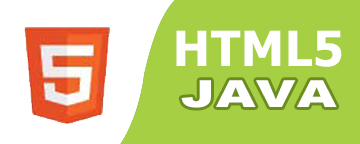HTML5 with JAVA
About Course
HTML5 is the latest hypertext markup language released in 2009. HTML5 is considered as the core technology of World Wide Web. It is the fifth revision of HTML.HTML5 combines the features of HTML, CSS and JavaScript.
The primary changes made to HTML5 are changes in markup, style, and interactivity. Markup changes are made in semantic elements and powerful forms. Style changes are made in rich fonts, grids and columns. Interactivity changes are made in geolocation API and local storage.
HTML5 provides open standard to developers. HTML5 is supported by a wide range of browsers. The browsers that support HTML5 are Chrome, Safari, Internet Explorer, Opera and Firefox. HTML5 is also supported by many mobile browsers like iPhone’s safari, Opera mini, Opera Mobile and Android’s mobile browser.
Features of HTML5:
- Supports multimedia through its new tags like audio, video and canvas.
- HTML5 is backward compatible as it supports all the previous markup versions.
- Supports dynamic applications.
- Enhanced semantics through standardized code.
- Highly consistent and improved accessibility.
- Supports offline application caching.
HTML5 can be easily integrated with the famous programming languages like .NET and Java. It can also be integrated with PHP.
In our course we guide you through step by step approach for integratingHTML5 with .NET, Java and PHP. When integrating with .NET, HTML5 forms are used with ASP .NET MVC application. When integrating HTML with Java and PHP, Net Beans IDE is used. The advanced features in Net Beans IDE (Integrated Development Environment) support HTML5 and its functions for building rich web applications.
HTML5 is a powerful language that is used for building powerful web page, web applications, and interactive games. We train you on each and every aspect of HTML5 in detail. Our real time projects help you gain better understanding and experience in programming.
Our experts provide training on the various automation tools that are available for testing web applications andHTML5. We teach you the scenarios with which you can perform effective testing. Learning HTML5 will not only be useful in testing web applications, but also useful in testing mobile browsers.
Course Content
HTML5 Integration with Java
-
Introduction to WEB
-
HTML Introduction
-
HTML5 Introduction
-
HTML5 Syntax
-
Obsolete Elements/Deprecated Elements
-
HTML5 Attributes
-
HTML5 Replaced Elements
-
HTML5 New Elements (More meaningful elements)
-
HTML5 New inline elements
-
HTML5 Input Types (More meaningful elements)
-
What is a Webform? (Web Forms 2.0)
-
HTML5 Form Elements
-
HTML5 Form Attributes
-
HTML5 Canvas HTML5-GRAPHICS (2D and 3D Effects)
-
HTML5 SVG HTML5-GRAPHICS (2D and 3D Effects)
-
HTML5 Drag/Drop (Deeper Integration with OS)
-
HTML5 Geolocation(Deeper Integration with OS)
-
HTML5 Multimedia (playing video and audio is easier than ever)
-
HTML5 Media (playing video and audio is easier than ever)
-
HTML5 Video (playing video and audio is easier than ever)
-
HTML5 Audio (playing video and audio is easier than ever)
-
WebRTC (Real-time Communication between Browsers)
-
HTML5 Web Storage (Expect the unexpected)
-
HTML5 App Cache (Offline Storage)
-
HTML5 Web Workers (Background JavaScript)
-
HTML5 SSE (One Way Messaging)
-
HTML5 Web Workers (Stay connected)
-
HTML5 – Web SQL Database
-
File / Hardware Access
-
HTML5 – MathML


